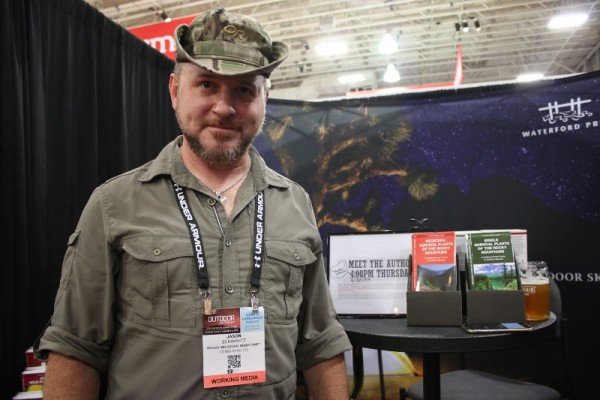Jason Schwartz has read a lot of outdoor survival manuals. As a kid growing up in the outdoors, he studied the plant life around him and discovered new ways of surviving the in the wild.
But all those survival books left something to be desired. There were often packed with too much information, were too technical and were thick. So he decided to take matters into his own hands and create a pocket-sized plant guide.
“I wanted to create something that was portable, easy to understand and that you can put in your pack,” he said.
RELATED: 5 Wild Edibles You Might Overlook
Schwartz recently appeared at the Outdoor Retailer convention signing copies of his two pocket sized survival guides, one on medicinal plants and the other edible plants. And although the book focuses on the Rocky Mountains, it can easily be applied to the Sierras and other mountain ranges as well.
“This is kind of a lifelong dream of mine to make something that was not only useful and practical but might help somebody in a survival situation,” Schwartz said.
RELATED: Pine Trees as Survival Food?
In a fold-out brochure style, the guide’s laminated pages reveals a range of edible plants from pine trees, to berries and even stinging nettle. It explains how to spot them and prepare their edible portions. And there is another guide for medicinal plants, such as using the blisters of a young fir tree to seal a cut.
These guides can be used in a pinch and serve as a worthwhile reference in the field, but for anyone completely unfamiliar with an area who plans on going out there and surviving, Schwartz advises seeking the counsel of a local guide.
“If you can, I would recommend to anybody to hook up with a local bush craft, survival, herbalist or go take a class,” he said. “That’s the best way to learn so that person will show you what to look for in a live environment.”
RELATED: Guide to Poisonous Plants
Equally important as what to eat is, is what not to eat. “Know what hemlock is and baneberry. There is a whole range of poisonous plants and some plants that can kind of mimic both.”
For beginners, he said, stick to those plants that are easy to identify such as plantain, dandelion and thistle.
For more on Jason Schwartz visit his Rocky Mountain Bushcraft blog.
To buy a copy of the guides, click here and here.








